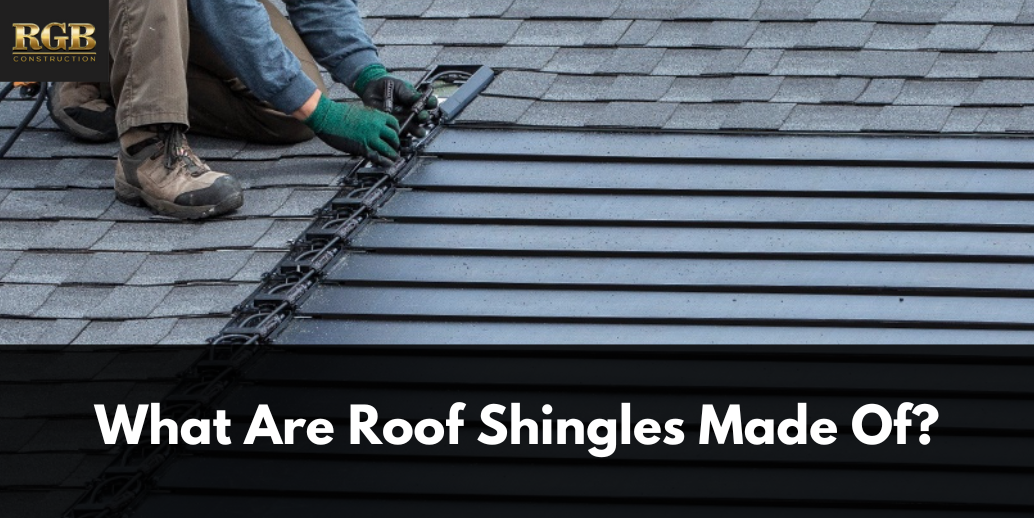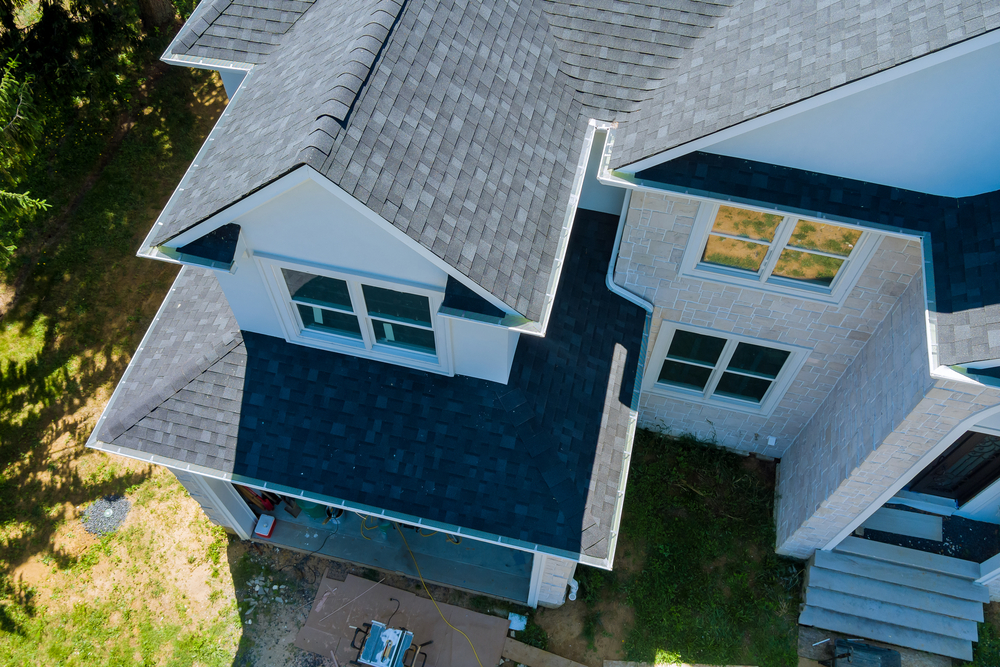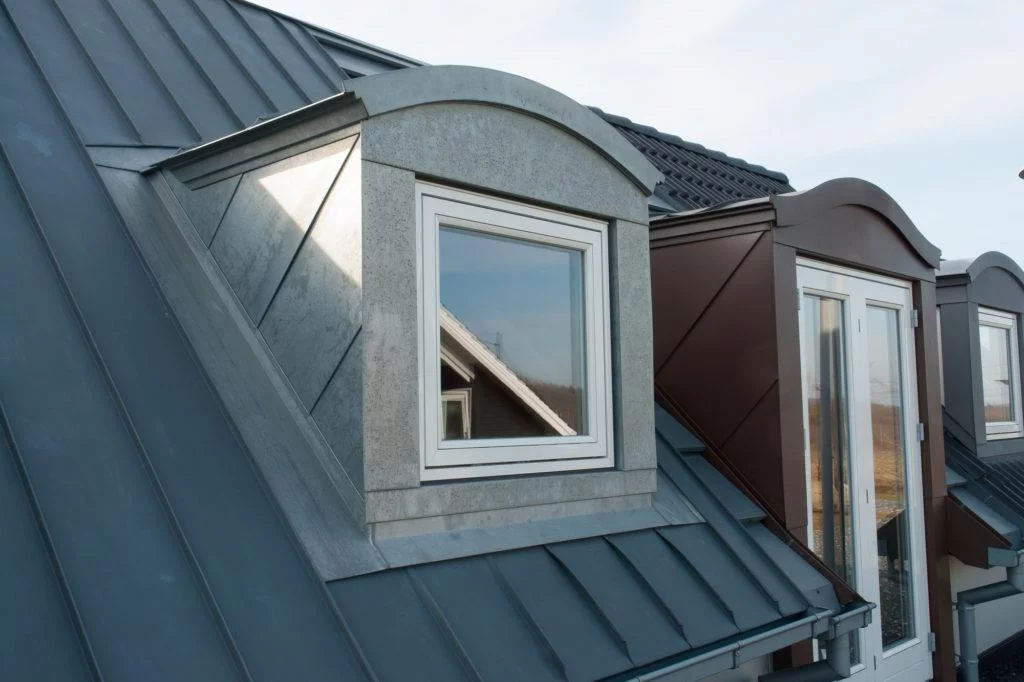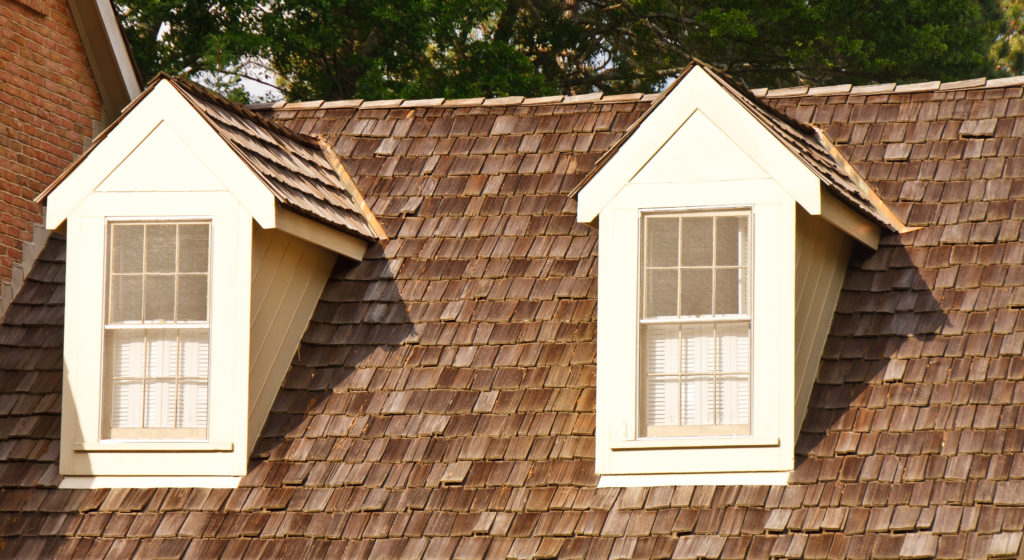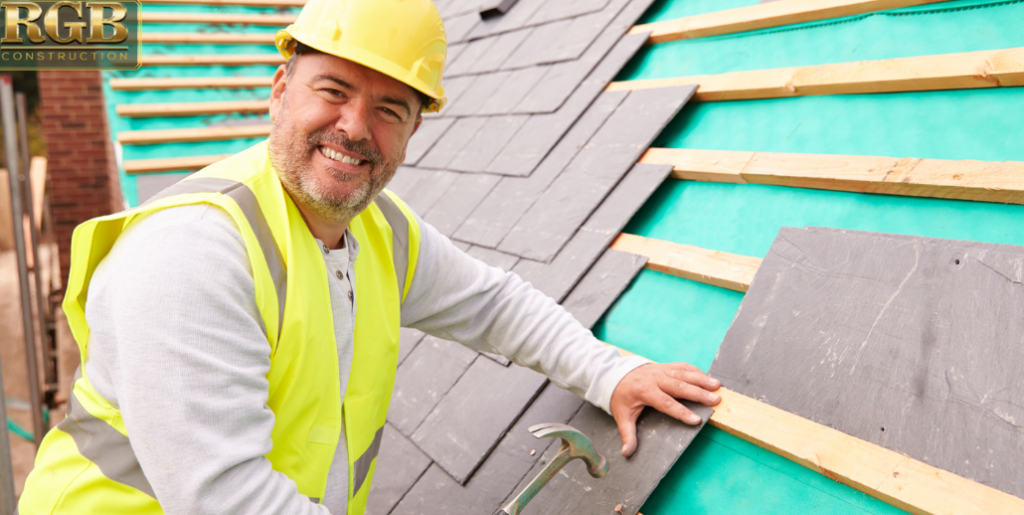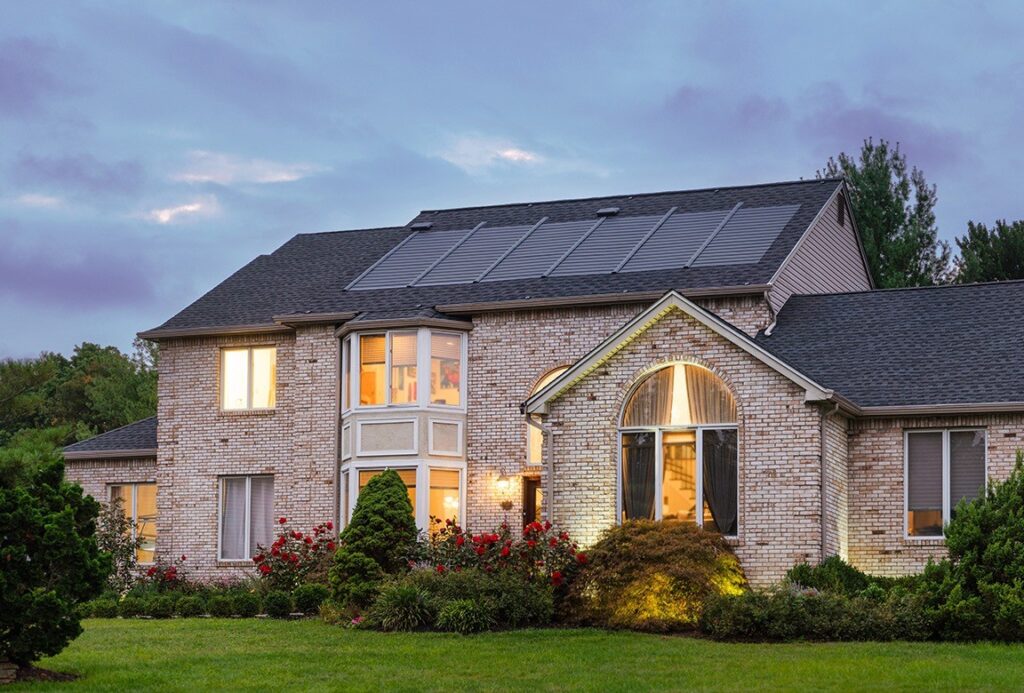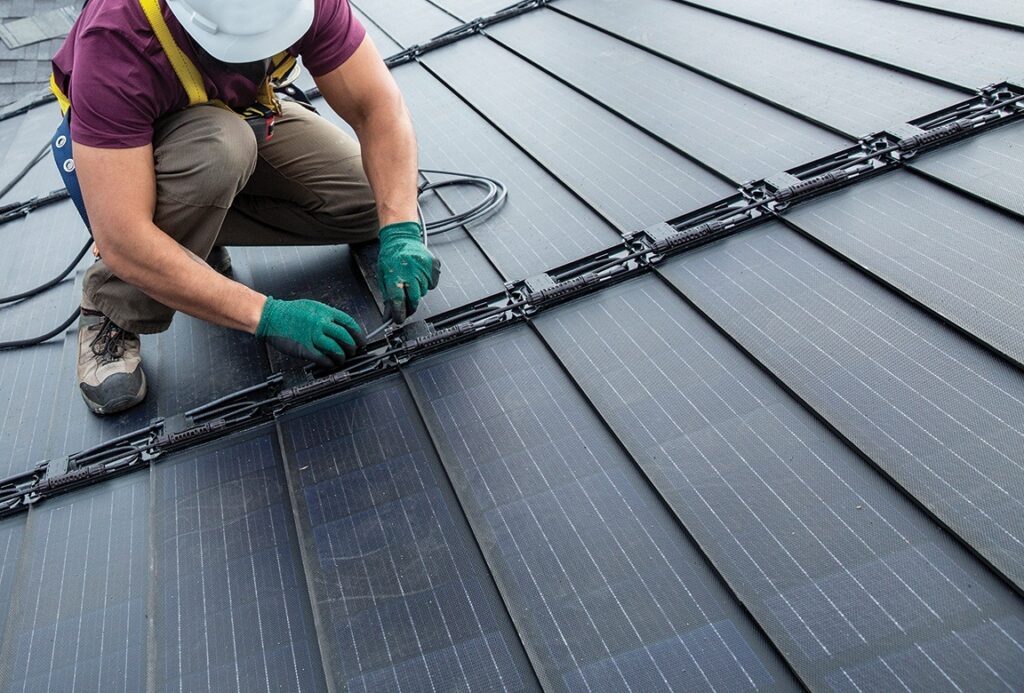What Materials Make Up Roof Shingles?
Have you ever wondered what materials are used to create roof shingles? Whether you’re considering a roof replacement or simply curious about the components that make up your roof, understanding the materials is essential. In this comprehensive guide, we’ll explore the question, “What are roof shingles made of?” and delve into the various materials used in their construction. RGB Construction, a leading roofing company in South Jersey serving Gloucester County and beyond, shares their expertise on this topic. So, let’s dive in and uncover the secrets behind roof shingle composition.
Asphalt Shingles
What Are Asphalt Shingles Made Of?
Asphalt shingles, one of the most popular roofing materials in the United States, are composed of a fiberglass mat coated with asphalt and embedded with ceramic granules. This combination creates a durable, affordable, and versatile roofing option for homeowners.
Advantages of Asphalt Shingles
- Affordability: Asphalt shingles are a cost-effective option, making them ideal for homeowners on a budget.
- Durability: High-quality asphalt shingles can withstand harsh weather conditions, including heavy rain, strong winds, and even hailstorms.
- Style Variety: Asphalt shingles come in a wide range of styles and colors, allowing homeowners to achieve their desired aesthetic for their roof.
- Easy Installation: Roofers find asphalt shingles easy to install, reducing labor costs and installation time.
Disadvantages of Asphalt Shingles
- Limited Lifespan: Compared to some other roofing materials, asphalt shingles have a relatively shorter lifespan, typically ranging from 15 to 30 years.
- Vulnerability to Temperature Changes: Rapid temperature fluctuations can cause asphalt shingles to expand and contract, potentially leading to cracking and damage over time.
Metal Shingles
What Are Metal Shingles Made Of?
Metal shingles, such as GAF Solar shingles, are crafted from various metals like aluminum, steel, or copper. These shingles mimic the appearance of traditional roofing materials like slate, wood, or clay, while harnessing the power of solar energy.
Advantages of Metal Shingles
- Longevity: Metal shingles are known for their exceptional durability and can last 50 years or more with proper maintenance.
- Energy Efficiency: Solar metal shingles, such as GAF Solar shingles, are designed to generate electricity from the sun, making them an environmentally friendly and cost-saving roofing option.
- Fire Resistance: Metal is a non-combustible material, providing excellent fire resistance for your roof.
- Aesthetic Appeal: Metal shingles offer a modern and sleek appearance, adding a touch of elegance to your home.
Disadvantages of Metal Shingles
- Higher Initial Cost: Metal shingles, including solar options, tend to have a higher upfront cost compared to traditional roofing materials. However, the long-term energy savings can offset the initial investment.
- Noise: Rainfall on a metal roof can create a louder noise compared to other roofing materials. However, proper insulation can minimize this issue.
Wood Shingles and Shakes
What Are Wood Shingles and Shakes Made Of?
Wood shingles and shakes are crafted from various types of wood, such as cedar, redwood, or pine. These natural materials provide a rustic and charming look to a home’s exterior.
Advantages of Wood Shingles and Shakes
- Aesthetic Appeal: Wood shingles and shakes offer a timeless and natural beauty, enhancing the curb appeal of a home.
- Insulation: Wood is a natural insulator, providing better insulation properties compared to some other roofing materials.
- Sustainability: Wood shingles and shakes are made from a renewable resource, making them an environmentally friendly choice.
Disadvantages of Wood Shingles and Shakes
- Higher Maintenance: Wood roofing requires regular maintenance, including periodic cleaning, staining, and sealing, to prevent issues such as moss or mildew growth.
- Susceptible to Weathering: Wood shingles and shakes are prone to weathering, rotting, and decay if not properly maintained.
- Fire Risk: Wood is a combustible material, making wood shingles and shakes more susceptible to fire. However, using pressure-treated wood or applying fire-resistant treatments can mitigate this risk.
Tile Shingles
What Are Tile Shingles Made Of?
Tile shingles are commonly made from clay or concrete and are known for their distinctive appearance. They are often associated with Mediterranean or Spanish-style architecture.
Advantages of Tile Shingles
- Durability: Tile shingles can last for over 50 years and are highly resistant to fire, rot, and insect damage.
- Energy Efficiency: The thermal properties of tile shingles help in reducing heat transfer, leading to potential energy savings.
- Aesthetic Appeal: Tile shingles offer a unique and elegant look, enhancing the visual appeal of a home.
Disadvantages of Tile Shingles
- Heavy Weight: Tile shingles are considerably heavier than other roofing materials, requiring additional structural support during installation.
- Fragility: Walking on tile shingles can be challenging, as they are fragile and can crack or break if not handled properly.
GAF Solar Shingles: Harnessing the Power of the Sun
What Are GAF Solar Shingles Made Of?
GAF Solar shingles are a revolutionary roofing solution that combines the benefits of solar energy generation with the durability of traditional shingles. These shingles are made of advanced photovoltaic (PV) cells, encased in a protective material that resembles traditional asphalt shingles.
Advantages of GAF Solar Shingles
- Solar Energy Generation: GAF Solar shingles harness the power of the sun, converting sunlight into electricity. This allows homeowners to generate clean energy and potentially reduce their reliance on the grid.
- Seamless Integration: GAF Solar shingles seamlessly blend with traditional shingles, maintaining the aesthetic appeal of the roof.
- Durability: GAF Solar shingles are designed to withstand harsh weather conditions, providing long-lasting performance and protection.
Disadvantages of GAF Solar Shingles
- Higher Initial Cost: GAF Solar shingles have a higher upfront cost compared to conventional asphalt shingles. However, the potential energy savings and incentives, such as tax credits and rebates, can offset the initial investment.
- Professional Installation: Due to the specialized nature of solar shingles, professional installation is recommended to ensure proper functionality and performance.
FAQs
1. What are the most common types of roof shingles?
The most common types of roof shingles include asphalt shingles, metal shingles, wood shingles, tile shingles, and solar shingles.
2. How long do asphalt shingles typically last?
The lifespan of asphalt shingles can vary depending on the quality of the shingles and environmental factors. On average, asphalt shingles can last between 15 to 30 years.
3. Are metal shingles more expensive than other roofing materials?
Metal shingles tend to have a higher upfront cost compared to some other roofing materials. However, their longevity and energy efficiency can make them a cost-effective choice in the long run.
4. Do wood shingles require a lot of maintenance?
Yes, wood shingles require regular maintenance to prevent issues such as moss or mildew growth. This includes periodic cleaning, staining, and sealing to maintain their appearance and durability.
5. Are tile shingles suitable for all types of homes?
Tile shingles are often associated with Mediterranean or Spanish-style architecture. While they can be used on various home styles, their weight requires additional structural support during installation.
6. How do GAF Solar shingles contribute to energy savings?
GAF Solar shingles generate electricity from the sun, allowing homeowners to reduce their reliance on the grid and potentially save on their energy bills.
Conclusion
Understanding the materials used in roof shingles is crucial when considering a roof replacement or installation. Whether you opt for asphalt shingles, metal shingles, wood shingles, tile shingles, or the innovative GAF Solar shingles, each material offers its unique benefits and considerations. RGB Construction, a trusted roofing company in South Jersey, can guide you in selecting the right shingles for your needs. Remember to assess factors such as durability, energy efficiency, aesthetic appeal, and maintenance requirements when making your decision.

